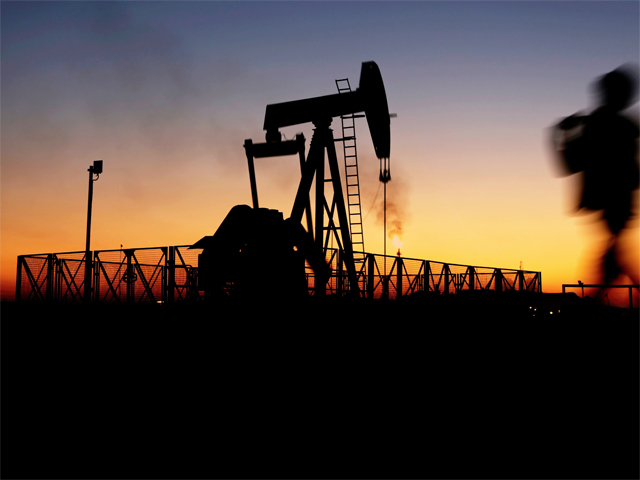Oil has crashed from $110 a barrel to $28 a barrel, and could fall to $20 a barrel. Many other commodity prices have crashed. What is happening, and why?
Oil supply has shot up even as demand has slowed. Non-Opec production has risen sharply, led by the US fracking revolution that has added four million barrels per day to world production. Once, Opec countries would cut production when faced with a glut, to keep prices high. But their quasi-monopoly on oil is gone. Cutting production will simply increase the market share of non-Opec producers like the US. So, Opec countries have decided to maximise output, fighting for market share.
Awash in Oil
Iraq’s production is up from 2.5 million barrels a day to 3.5 million. Iran, just freed of sanctions, plans to increase output by one million barrels a day. This will add to the rising glut — US inventories are already a record 1.3 billion barrels.
Much non-Opec oil is high-cost: fracked oil, tar-sand oil or deep-water oil. Rising prices in the 2000s spurred high-cost production. Saudi Arabia plans to let prices fall freely, forcing high-cost wells to close down across the world, improving prices for and the market share of low-cost Opec producers.
The problem is not limited to oil. Prices of virtually all commodities have crashed since the boom of the 2000s, marking the end of a commodity supercycle. History shows that commodity prices rise and fall year after year in tandem with economic activity, but are also characterised by supercycles — long booms followed by long busts — every few decades. A major supercylical boom in the 1970s was followed by a long bust in the 1980s and 1990s, followed by the super-boom of the 2000s.
In the 2010s, we are now witnessing a super-bust. Remember, the last super-bust lasted two decades. So, even if oil prices recover later this year to, say, $45 a barrel, that will be just a tweak within the supercylical trough. Expect commodity prices to stay subdued for years to come.
Once, mining was simple and fast, and oilfields were shallow and easily developed. But now environmental and other clearances can take years. Auctions and stringent regulations have raised entry costs. With easy deposits already gone, new deposits are deeper and costlier to develop. So, the fixed cost of new mineral production has risen sharply. However, once production starts, the marginal cost of producing an additional tonne is relatively low, and keeps falling till peak capacity is reached.
In easy Saudi fields, the marginal cost of producing oil is under $3 a barrel. In difficult fields and mines, the marginal cost may be just onefifth or less of the average cost. If, for instance, the average cost of producing fracked oil is $50 a barrel, the fixed cost may be $35 a barrel and the marginal cost may be only $15 a barrel. At a market price of $30, the company will lose money because of high fixed costs.
But the company will keep producing at a loss as long as the market price is higher than the marginal cost, waiting for an upturn. This strategy will be financially optimal, yet potentially suicidal. It will have asticky end if a company runs out of cash and borrowing capacity to keep producing at a loss.
Busting Competitors
Every mining company knows that success and survival lie in producing enough for long enough, even at a loss, to bankrupt its competitors. This induces a race to the bottom, keeping up production at ever-falling prices in the hope of remaining one of a few survivors at the end of the bust. This is the curse of marginal cost being much lower than average cost.
When a boom ends, many mines and oilfields are still being developed. The developers have a choice of abandoning their investments, or of going to full production, taking losses and hoping all will be well when they reach peak production. Optimism is especially strong in the upswing of a supercycle. Alas, it creates super-excess capacity at the end of the cycle, and causes a super-bust.
What lessons flow for India? First, we must prepare for a global recession, even though it may not happen. I have argued strongly in these columns for sticking to fiscal consolidation targets. But if a recession strikes, a higher fiscal deficit will be inevitable (with falling revenue) and desirable (to boost demand). The countercyclical emphasis will have to be on infrastructure, which yields long-run returns.
Second, we must live with lower investment in several industries, especially bulk metals and chemicals. ‘Make in India’ must be highly selective. Whether we suffer a slowdown or outright recession, desperate exporters (including China) will dump huge quantities of bulk commodities like steel, non-ferrous metals, chemicals and plastics. These are also subject to the curse of marginal cost: they have high fixed costs and much lower marginal costs. So, excess world capacity will persist for years.
Third, beware of a high countercyclical stimulus for excessively long. We committed this blunder during 2009-11. We must avoid the temptation next time.


